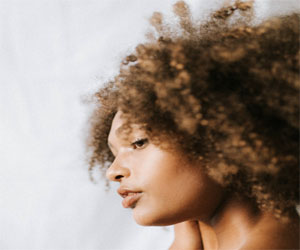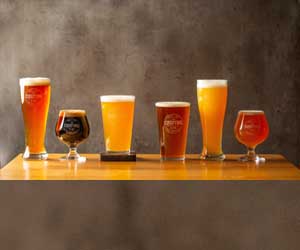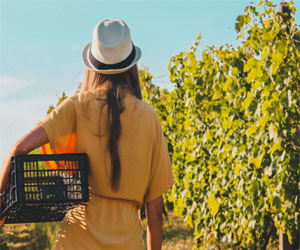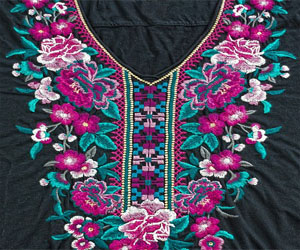


The Path To Healthier, Radiant Skin And Self-Confidence

Non-toxic beauty, often referred to as clean beauty, has been making waves in the cosmetic industry. It's a movement that prioritizes the use of safe, natural, and non-toxic ingredients in beauty products, with a focus on overall well-being and self-confidence. In this article, we'll explore what non-toxic beauty is all about and why it's gaining prominence among consumers who value health and sustainability.
Understanding The Toxins: Non-toxic beauty advocates for the avoidance of harmful chemicals commonly found in many conventional beauty products. These chemicals, such as parabens, phthalates, formaldehyde, and artificial fragrances, have been associated with various health concerns, including allergies, hormonal disruption, and even cancer.
Clean Ingredients: Non-toxic beauty products are formulated with clean, safe ingredients. This means they exclude harmful chemicals and replace them with natural, organic, and plant-based alternatives. For example, clean skincare often uses ingredients like aloe vera, shea butter, and essential oils.
Sustainability Matters: Non-toxic beauty goes hand in hand with sustainability. Brands that champion non-toxic beauty often focus on eco-friendly packaging and sustainable sourcing of ingredients. By reducing their environmental footprint, they align with the principles of environmental consciousness.
Transparency And Accountability: Non-toxic beauty brands are known for their transparency. They provide clear information about the ingredients they use, their sourcing, and their production processes. This empowers consumers to make informed choices about the products they apply to their skin.
Cruelty-Free: Many non-toxic beauty brands are committed to cruelty-free practices. They don't test their products on animals, aligning with the values of ethical consumerism.
Non-Toxic Makeup: Non-toxic beauty extends beyond skincare to include makeup products. Non-toxic makeup brands provide a range of clean cosmetics, from foundation and lipstick to mascara and eyeshadow, offering a safer alternative for enhancing beauty.
Holistic Approach: Non-toxic beauty encourages a holistic approach to beauty and self-care. It emphasizes that beauty isn't just skin deep, and it is intertwined with overall well-being, mental health, and self-confidence.
Gentler On Sensitive Skin: Non-toxic beauty products tend to be gentler on sensitive skin. Without harsh chemicals and artificial fragrances, they are less likely to cause skin irritations, allergies, or breakouts.
Efficacy And Results: Many people assume that non-toxic beauty products are less effective than their conventional counterparts. However, clean beauty products are often equally or even more effective, as natural ingredients like coconut oil, aloe vera, and tea tree oil are renowned for their therapeutic and rejuvenating effects.
Empowerment: Choosing non-toxic beauty is a statement of empowerment. It signifies a commitment to self-care, well-being, and a desire to use products that nourish the skin, respect the environment, and promote self-confidence.
Non-toxic beauty isn't merely a trend; it's a movement that resonates with those who prioritize health, sustainability, and well-being. By opting for clean beauty products, individuals can nourish their skin with clean, safe, and effective alternatives, while also minimizing their impact on the environment.
In a world where conscious consumerism and holistic self-care are gaining momentum, non-toxic beauty is more than just a choice; it's a commitment to healthier, more radiant skin, and self-confidence. So, why not embrace non-toxic beauty and be part of a movement that values both your well-being and the health of the planet? Your skin and self-confidence will thank you for it.
The Magical Transformation Behind The Brew
 The Fermentation Process: Fermentation begins when the wort (unfermented beer) is transferred to a fermentation vessel, and yeast is introduced. The yeast starts consuming the sugars, breaking them down into alcohol, carbon dioxide, and a range of flavor compounds. During this process, the temperature and oxygen levels are carefully controlled to achieve the desired characteristics for the beer style.
The Fermentation Process: Fermentation begins when the wort (unfermented beer) is transferred to a fermentation vessel, and yeast is introduced. The yeast starts consuming the sugars, breaking them down into alcohol, carbon dioxide, and a range of flavor compounds. During this process, the temperature and oxygen levels are carefully controlled to achieve the desired characteristics for the beer style.
Primary And Secondary Fermentation: The initial fermentation, called primary fermentation, typically lasts one to two weeks. Afterward, some beer styles may undergo a secondary fermentation or conditioning phase. In secondary fermentation, the beer may be transferred to a different vessel, such as a secondary fermenter or barrels, to develop further flavors and clarity.
Flavor Development: The fermentation process is where the beer's flavor is largely determined. Yeast produces a wide variety of compounds, including alcohols, esters, and phenols, which contribute to the aroma and taste of the beer. For example, esters can impart fruity notes like banana or apple, while phenols may introduce subtle smoky or spicy characteristics.
Alcohol Production: The yeast's primary job is to convert sugars into alcohol. Ethanol, the type of alcohol found in beer, is the result of this process. The level of alcohol in the final beer depends on factors such as the type and amount of malt used and the yeast's alcohol tolerance.
Carbonation: In addition to alcohol, fermentation produces carbon dioxide, which is the source of beer's effervescence. The carbonation level can be controlled by varying factors like yeast strain, fermentation temperature, and pressure during packaging. Some beer styles are naturally carbonated, while others may undergo forced carbonation.
Achieving Consistency: Consistency in fermentation is crucial for breweries to produce the same beer batch after batch.
Unwinding Your Senses And Elevating Well-Being
 The Science Of Aromatherapy
The Science Of Aromatherapy
Aromatherapy is a holistic healing practice that uses essential oils, which are extracted from plants, to promote physical and emotional well-being. These essential oils contain natural compounds that have a range of therapeutic benefits. When inhaled, these compounds interact with the olfactory system and the brain, triggering various responses.
Aromatherapy through candles operates on this very principle. As the candle burns and releases the fragrance of the essential oils blended into the wax, these scents enter our respiratory system, affecting our mood, stress levels, and overall health.
Choosing The Right Aromatherapy Candle
The journey into the world of aromatherapy candles begins with selecting the right candle for your needs. Here are a few factors to consider:
Fragrance: The choice of fragrance depends on your goals. Lavender is known for its calming properties, making it perfect for relaxation and sleep. Citrus scents like lemon and orange are invigorating and ideal for boosting energy and focus.
Quality: Ensure that the candle you choose uses high-quality essential oils. The purity of the oils can significantly affect the therapeutic benefits.
Wax Type: Natural waxes like soy and beeswax are often preferred for aromatherapy candles because they burn cleanly and don't produce harmful toxins.
Finding Serenity In Creativity
 One of the most immediate benefits of crafting for inner peace is stress reduction. Engaging in a creative project allows you to temporarily escape from the whirlwind of everyday life. As you immerse yourself in the craft, your focus shifts away from daily worries, and you experience a calming sense of flow and mindfulness. This mental break can significantly lower stress levels and promote relaxation, which, in turn, leads to a greater sense of well-being.
One of the most immediate benefits of crafting for inner peace is stress reduction. Engaging in a creative project allows you to temporarily escape from the whirlwind of everyday life. As you immerse yourself in the craft, your focus shifts away from daily worries, and you experience a calming sense of flow and mindfulness. This mental break can significantly lower stress levels and promote relaxation, which, in turn, leads to a greater sense of well-being.
Crafting is also a practice of mindfulness. When you're deeply absorbed in a creative project, you enter a meditative state where you lose track of time and are entirely present in the moment. This quality of focus and presence can be profoundly calming and is akin to the practice of mindfulness meditation, which is known to reduce anxiety and improve mental health.
Moreover, crafting for inner peace enhances your sense of accomplishment. Watching your project take shape and witnessing your creative vision come to life is incredibly rewarding. This feeling of achievement can boost your self-esteem, instill a sense of pride, and cultivate an inner sense of worth and purpose.
The sense of serenity and peace that crafting brings is deeply rooted in the tactile nature of the activity. Engaging your senses - touching, feeling, and manipulating materials - is a grounding experience. Whether you're sculpting with clay, stitching fabrics, or painting with brushes, the tactile aspect of crafting can connect you with your surroundings and enhance your appreciation for the present moment.
Cultivating Wine's Essence
 Pruning: Pruning is a critical aspect of vineyard management, as it shapes the vines and influences the quality of the fruit. Pruning helps control the yield of the vine, ensuring that it produces a balanced crop with optimal grape ripeness. The timing and precision of pruning are essential to the health of the vines and the quality of the grapes.
Pruning: Pruning is a critical aspect of vineyard management, as it shapes the vines and influences the quality of the fruit. Pruning helps control the yield of the vine, ensuring that it produces a balanced crop with optimal grape ripeness. The timing and precision of pruning are essential to the health of the vines and the quality of the grapes.
Pest And Disease Control: Protecting the vineyard from pests and diseases is essential for a successful harvest. Integrated pest management techniques are often employed, which may include the use of natural predators, organic pesticides, or careful monitoring of vine health.
Harvesting: The timing of the grape harvest is critical, and it varies depending on the type of wine being produced. For sparkling wines or crisp white wines, grapes may be picked early for high acidity. In contrast, red wines may require longer hang times on the vine for optimal ripeness. Handpicking is still the choice in many vineyards, as it allows for the selective harvesting of the best fruit.
Sustainable Viticulture: In recent years, the wine industry has witnessed a shift towards sustainable viticulture practices. Many vineyards are adopting eco-friendly methods to preserve the natural balance of the environment. This includes organic and biodynamic practices that promote biodiversity, soil health, and minimal chemical intervention.
Challenges Of Viticulture: Viticulture presents its own set of challenges. Factors such as climate change, extreme weather events, and new pest threats can pose risks to vineyard health. Viticulturists must adapt and innovate to mitigate these challenges while maintaining the quality of the grapes.
Nourishing Your Locks Naturally
 No Harmful Chemicals: Conventional haircare products often contain harsh chemicals that can strip hair of its natural oils and lead to damage and breakage. Organic haircare products are free from these potentially harmful chemicals, which means they're less likely to cause long-term damage to your hair.
No Harmful Chemicals: Conventional haircare products often contain harsh chemicals that can strip hair of its natural oils and lead to damage and breakage. Organic haircare products are free from these potentially harmful chemicals, which means they're less likely to cause long-term damage to your hair.
Environmentally Friendly: Organic haircare brands often prioritize sustainable and eco-friendly practices. They use ingredients sourced from ethical and sustainable suppliers and package their products in recyclable or biodegradable materials. This reduces the environmental impact of haircare routines.
Nourishing Ingredients: Organic haircare products often contain nourishing and hydrating ingredients like aloe vera, coconut oil, argan oil, shea butter, and essential oils. These natural components provide moisture, shine, and strength to your hair.
Safer For Color-Treated Hair: For those who color their hair, organic haircare products can be gentler and safer. They help maintain the vibrancy of hair color without the risk of fading or damage.
Holistic Hair Health: Organic haircare takes a holistic approach to hair health. It emphasizes the interconnectedness of overall well-being with healthy hair. A well-balanced diet, adequate hydration, and reduced stress are all factors that contribute to the well-being of your hair.
Exploring The Art Of Sewing Techniques
 Backstitch: This technique reinforces seams by doubling back through the previous stitch. It's essential for creating strong, secure joins in fabric.
Backstitch: This technique reinforces seams by doubling back through the previous stitch. It's essential for creating strong, secure joins in fabric.
Zigzag Stitch: The zigzag stitch is used to finish raw fabric edges to prevent fraying. It's also handy for sewing stretch fabrics and creating decorative edging.
Seam Allowance: Understanding the appropriate seam allowance is crucial for constructing well-fitted garments and avoiding unnecessary bulk in seams.
Advanced Sewing Techniques: Once you've mastered the basics, you can explore advanced sewing techniques that offer more creative and functional possibilities:
Gathering: This technique involves stitching multiple rows of long, loose stitches, which are then pulled to create gathers or ruffles in the fabric. Gathering is often used in creating full skirts, puff sleeves, or decorative elements.
Bias Binding: Bias binding is used to finish raw fabric edges, providing a clean and durable edge with the help of strips cut on the diagonal (the bias) of the fabric. It's ideal for curved hems and necklines.
Darts: Darts are folded, stitched seams that provide shape and contour to garments, particularly for a better fit around curves like the bust, waist, or hips.